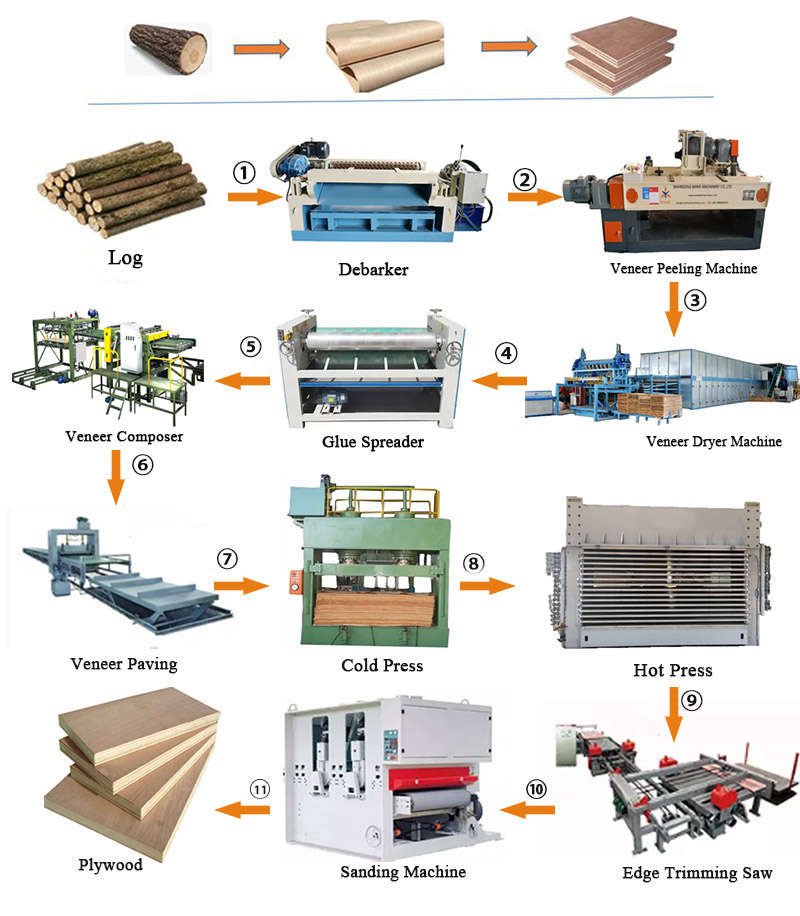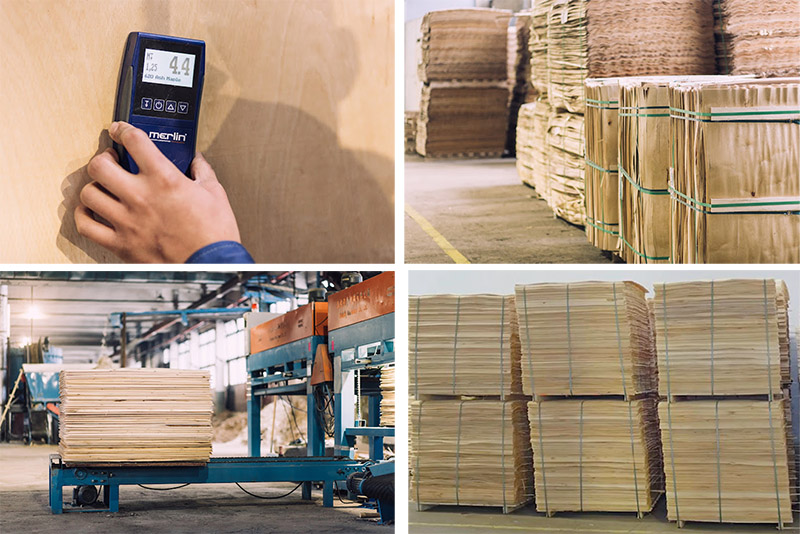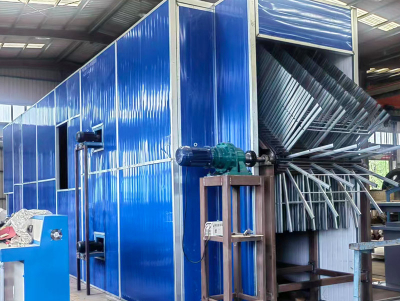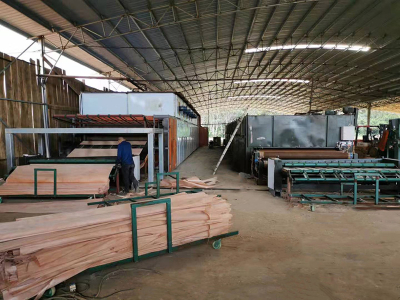Plywood production process
The production process of plywood is a multi-step process involving raw material processing, veneer production, gluing and pressing, and post-processing. Here are the main production processes:
1. Log processing
Cut: Cut logs into lengths suitable for peeling or planing (usually 2.6 meters or customized sizes).
Debarking: Remove bark to reduce the impact of impurities on subsequent processes.
Cooking and softening (optional): Soak or cook logs (temperature about 60-80℃) to soften wood fibers for peeling.
2. Veneer production
Pearl cutting (main process):
Fix the softened logs on the peeling machine and rotate to cut out continuous veneers (thickness 0.1-4mm).
Planing (special needs):
For wood with high texture requirements (such as decorative panels), planing is used to obtain veneers with straight grain or special patterns.
Veneer drying:
The moisture content of the veneer is reduced to 6-12% through a veneer dryer (temperature 70-120℃) to prevent deformation after gluing.
3. Veneer finishing
Sorting and repairing:
Remove defective veneers such as cracks and wormholes, and repair small holes or cracks.
Gluing:
Apply adhesive (usually urea-formaldehyde resin, phenolic resin or environmentally friendly glue) evenly on the surface of the veneer, with an amount of about 100-300g/m².
4. Assembly (overlapping)
Structural design:
Overlap veneers (odd number of layers, such as 3 layers, 5 layers) according to the principle of "vertical wood grain of adjacent layers" to ensure balanced strength.
Symmetrical arrangement:
Use high-quality veneer for the surface layer, and thicker or low-cost wood for the core layer.
5. Hot pressing
Pre-pressing (optional):
Preliminary pressure fixation of the veneer to reduce misalignment during hot pressing.
Hot pressing:
In a hot press (temperature 110-140℃, pressure 1.0-1.5MPa, time 1-1.5 minutes/mm thickness), the adhesive is cured to form a stable board.
6. Post-processing
Cooling and curing:
Naturally cool and stand for 24-48 hours to release internal stress and stabilize the size.
Trimming and sanding:
Cut into standard size (such as 1220×2440mm), sand the surface until it is flat and smooth.
Grading and inspection:
Grade strength, moisture content, and appearance according to national standards (such as GB/T 9846).
7. Special treatment (optional)
Veneer treatment: additional decorative layer (such as veneer, melamine impregnated paper).
Functional treatment: moisture-proof (phenolic glue), fireproof (flame retardant immersion), anti-corrosion (chemical treatment), etc.
Key control points
Veneer quality: uniform thickness and no defects.
Adhesive selection: environmental protection (such as E0/E1 grade), water resistance.
Hot pressing parameters: temperature, pressure, and time must match the type of glue and thickness.
Moisture content control: avoid warping or cracking of the board.
Application areas: building formwork, furniture manufacturing, packaging boxes, ships, etc.












